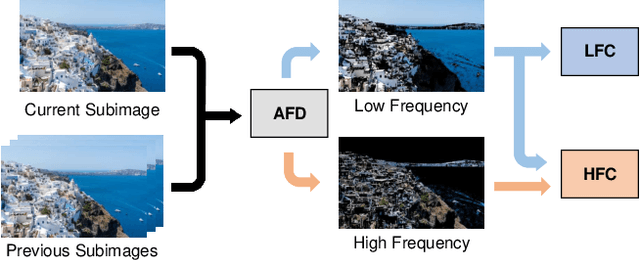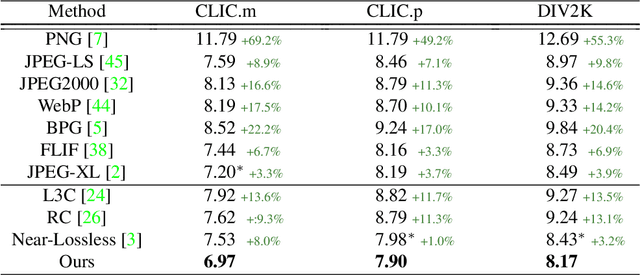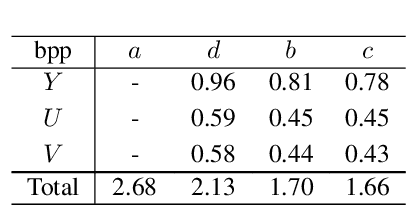Yeong Il Jang
Self-supervised Image Denoising with Downsampled Invariance Loss and Conditional Blind-Spot Network
Apr 19, 2023Abstract:There have been many image denoisers using deep neural networks, which outperform conventional model-based methods by large margins. Recently, self-supervised methods have attracted attention because constructing a large real noise dataset for supervised training is an enormous burden. The most representative self-supervised denoisers are based on blind-spot networks, which exclude the receptive field's center pixel. However, excluding any input pixel is abandoning some information, especially when the input pixel at the corresponding output position is excluded. In addition, a standard blind-spot network fails to reduce real camera noise due to the pixel-wise correlation of noise, though it successfully removes independently distributed synthetic noise. Hence, to realize a more practical denoiser, we propose a novel self-supervised training framework that can remove real noise. For this, we derive the theoretic upper bound of a supervised loss where the network is guided by the downsampled blinded output. Also, we design a conditional blind-spot network (C-BSN), which selectively controls the blindness of the network to use the center pixel information. Furthermore, we exploit a random subsampler to decorrelate noise spatially, making the C-BSN free of visual artifacts that were often seen in downsample-based methods. Extensive experiments show that the proposed C-BSN achieves state-of-the-art performance on real-world datasets as a self-supervised denoiser and shows qualitatively pleasing results without any post-processing or refinement.
LC-FDNet: Learned Lossless Image Compression with Frequency Decomposition Network
Dec 13, 2021



Abstract:Recent learning-based lossless image compression methods encode an image in the unit of subimages and achieve comparable performances to conventional non-learning algorithms. However, these methods do not consider the performance drop in the high-frequency region, giving equal consideration to the low and high-frequency areas. In this paper, we propose a new lossless image compression method that proceeds the encoding in a coarse-to-fine manner to separate and process low and high-frequency regions differently. We initially compress the low-frequency components and then use them as additional input for encoding the remaining high-frequency region. The low-frequency components act as a strong prior in this case, which leads to improved estimation in the high-frequency area. In addition, we design the frequency decomposition process to be adaptive to color channel, spatial location, and image characteristics. As a result, our method derives an image-specific optimal ratio of low/high-frequency components. Experiments show that the proposed method achieves state-of-the-art performance for benchmark high-resolution datasets.
 Add to Chrome
Add to Chrome Add to Firefox
Add to Firefox Add to Edge
Add to Edge